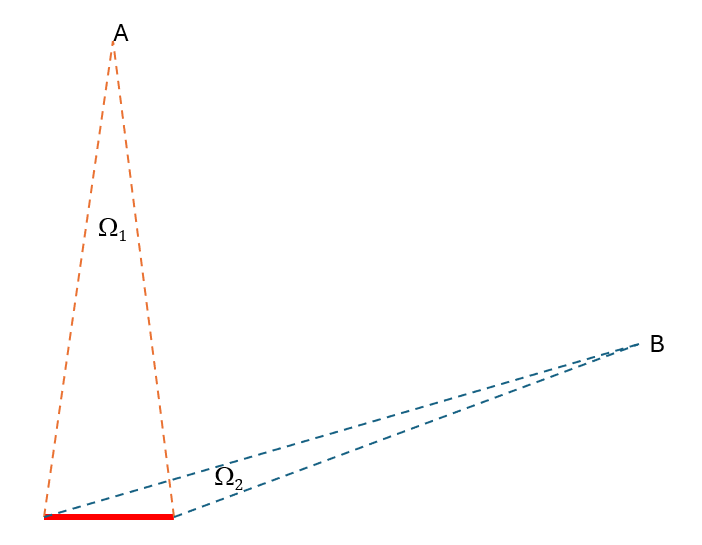I'm really worried about "Lambert's law": A blackbody emitter is supposed to be "Lambertian" but I know from blackbody radiation that its radiance L (W/m²/Sr) is independent of direction: This means that an observer A measures the same radiance as observer B. However, since the object appears at a smaller solid angle for B than for A, the total power on a detector of same area is smaller for B. This is a purely geometric effect due to the reduced solid angle at which the emitter for B is seen compared to A.
On the other hand, I often read that the radiation density L emanating from a Lambertian surface is already angle dependent according do a cos-law and disappears at an angle of 90°. But isn't that wrong? A Lambertian radiator appears equally bright from different viewing angles and the fact that B receives less power compared to A is only due to the reduced solid angle and not because of physics. I might be wrong...

